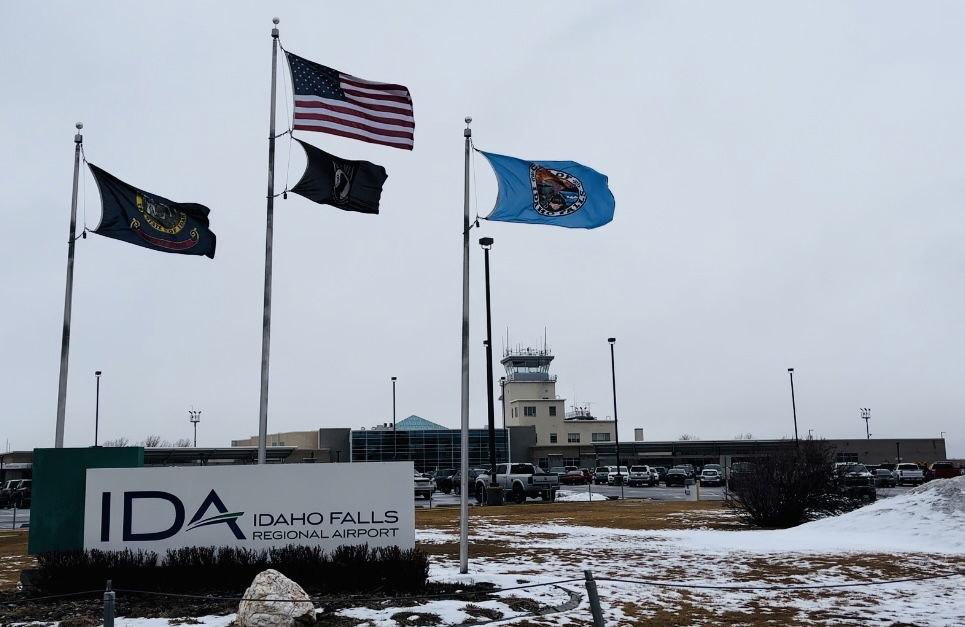Idaho
Plans for Ada County broadband network on hold after state turns down grant application

Visions of a broadband network circling Ada County won’t come true anytime soon after the State of Idaho passed up the Treasure Valley for federal funding projects for needs in rural Idaho.
Originally conceived by Ada County as a $10 million project using some of the county’s federal American Rescue Plan Act funds, the project eventually morphed into a partnership with all of Idaho’s most populous county’s cities to propose a 140-mile broadband network. The proposal would put the network through all six of Ada County’s cities and extend it up north into Gem County, priming it for future expansion into the rural areas of the fringes of the more urban Treasure Valley.
But, for now, this project is on the shelf after the Idaho Broadband Advisory Board opted for other projects in rural Idaho. The proposal for Ada County was one of hundreds of millions of dollars of proposals left on the cutting room floor in the first two rounds of grant awards by the board, which is made up of state legislators and some private industry leaders.
“We are hoping to educate lawmakers and members of the Broadband Advisory Board about the ongoing need and to dispel the myth that urban centers don’t need broadband funds,” City of Boise spokesperson Maria Weeg told BoiseDev. “Boise in particular still struggles with both access (can folks get internet service at all/is there infrastructure in place) and affordability issues (very little market competition here so prices are higher).”
Ada County project to regional pitch
In early 2022, Ada County talked to BoiseDev about its proposal to use some of its local ARPA funds to improve the broadband network.
The idea would have used $10 million to build a nearly 100-mile loop of high-speed broadband fiber through areas north of Star and Eagle, in western Meridian and all the way south of Kuna. This would have brought expensive fiber infrastructure closer to rural areas of the county set for growth, adding more options for customers and opening the way for private companies to serve these areas currently left out of a fast connection.
Ada County’s IT Director Stephen O’Meara told BoiseDev the county decided not to use its own funds for a broadband project because there were federal dollars flowing into the State of Idaho that could go towards these upgrades. But, the City of Boise, the county and the other Ada County cities were not successful in landing federal grant money last year allocated by the Idaho Broadband Advisory Board.
“At this point, we continue to work with our partners in the Treasure Valley, examining what other options we should consider as both the city and the county believe such an effort would be very beneficial to all citizens in the area,” O’Meara said. “Currently, we are in the planning stages for next steps, but are not pending the results of any grants as of right now.”
The proposal to build a Greater Treasure Valley Network would have cost $40 million total. Ada County and its six cities applied for $20 million in federal grant funds from the American Rescue Plan Act given to the state by the Idaho Broadband Advisory Board. Another $20 million would have come from a match from private wireless companies Involta, Zayo and Fatbeam.
More demand statewide than funds available
The arrival of COVID-19 hastened talks about the importance of broadband infrastructure nationwide, particularly in rural states like Idaho.
Both the state and federal governments kicked in millions over the past few years trying to boost broadband installation to bring faster speeds to rapidly growing areas and hard-to-reach rural communities where private investment isn’t an incentive to bring service. The Idaho Broadband Advisory Board was created in 2021 and is filled with Governor Brad Little’s appointees to outline priorities for grant funds and select which projects get funded, and which don’t.
Idaho has had three pots of money for broadband, one of them funded by the State of Idaho and the other two from the federal government.
The first program was the Idaho Broadband Fund in 2021, which set aside $35 million from state funds to go toward projects with high matches from outside groups known in the broadband world as “middle mile” needs. These projects help build out high speeds from specific destinations to strengthen speeds statewide, but it doesn’t reach into specific subdivisions or far-flung valleys like “last mile” projects. It serves as a backbone that private providers can build off of to improve services in a local network.
When the board opened the application process for projects, proposals flooded in. The state only allocated $35 million, but between $300 and $400 million in requests came in. The broadband advisory board ultimately settled on funding $26 million in improvements to build a 100-mile broadband network between Moscow and Grangeville proposed by the Port of Lewiston and another pitched by Idaho Regional Optical Network and Intermountain Infrastructure Group to build an even longer broadband link between Grangeville and Star.
The next grant the broadband advisory board gave out was $120 million in money specifically from the federal COVID relief package the American Rescue Plan Act. This is the grant Ada County and the other cities applied for and didn’t get. For the $120 million available, more than half a billion in requests came in from around the state. Eighteen projects connecting more than 30,000 homes and businesses were awarded funds.
Ramon Hobdey Sanchez, the Idaho Department of Commerce’s broadband program manager, said the combination of how competitive the grants were and how the state’s strategic plan specifically calls out more remote areas makes an application for Ada County unlikely.
“The board and the stakeholders are so focused on small-town rural Idaho,” he told BoiseDev. “Rural America is what this program is focused on connecting. Obviously (the Treasure Valley) can be a participant, but with that context of how much need there is it would be hard for them to rise to the top I think for what infrastructure already exists.”
Next up, the Idaho Broadband Advisory Board will be putting the finishing touches on the requirements and vision for its third federal grant program, this time funded by the Bipartisan Infrastructure Act. The massive allocation gave Idaho $583 million to build more projects in the state.

Idaho
Passengers evacuated after “suspicious device” was found at the Idaho Falls Regional Airport – Local News 8

The following is a media release from the City of Idaho Falls.
IDAHO FALLS, Idaho (City of Idaho Falls) – Around 3:50 p.m. on Saturday, Jan. 11, a security incident occurred at the Idaho Falls Regional Airport resulting in the response of the Idaho Falls Police and Fire Departments.
Passengers were immediately evacuated to a safe terminal area while an investigation occurred.
During the security screening process, a suspicious device was discovered in the luggage. Upon concluding the investigation, it was determined the suspicious item was not dangerous. The airport has no further information to provide at this time.
KIFI Local News 8 is committed to providing a forum for civil and constructive conversation.
Please keep your comments respectful and relevant. You can review our Community Guidelines by clicking here
If you would like to share a story idea, please submit it here.
Idaho
Suspicious device found at Idaho Falls airport was not dangerous, officials say – East Idaho News

IDAHO FALLS – A suspicious device discovered in someone’s luggage at the Idaho Falls Regional Airport Saturday afternoon resulted in an evacuation.
The Idaho Falls Police and Fire Departments responded around 3:50 p.m., according to city spokesman Eric Grossarth. The item in question was not specified.
Authorities detained passengers in a safe area of the terminal during the investigation. Witnesses say it lasted around 30 minutes and the road leading to the airport was closed during that time.
Ultimately, police determined the device was not dangerous.
Roads have re-opened and authorities have cleared the scene.
EastIdahoNews.com will provide updates as we receive them.
=htmlentities(get_the_title())?>%0D%0A%0D%0A=get_permalink()?>%0D%0A%0D%0A=htmlentities(‘For more stories like this one, be sure to visit https://www.eastidahonews.com/ for all of the latest news, community events and more.’)?>&subject=Check%20out%20this%20story%20from%20EastIdahoNews” class=”fa-stack jDialog”>
Idaho
Idaho Legislature’s budget committee accepts report recommending raises for state employees – East Idaho News

BOISE (Idaho Capital Sun) – The Idaho Legislature’s Joint Finance-Appropriations Committee closed out the first week of the 2025 legislative session Friday by accepting a report recommending raises of $1.55 per hour for all state employees.
The Joint Finance-Appropriations Committee, or JFAC, is a powerful legislative committee that meets daily and sets the budgets for every state agency and department.
A day earlier, on Thursday, the Idaho Legislature’s Change in Employee Compensation Committee voted 7-3 to recommend the $1.55 per hour raises.
On Friday, JFAC voted to accept the report with the recommendation from the Change in Employee Compensation Committee, but it did not vote on whether to approve the raises.
An actual JFAC vote on the raises is expected on Wednesday or Thursday.
JFAC also accepted a report Friday from the Economic Outlook and Revenue Assessment Committee that projected $6.4 billion in state revenue will be available for next year’s budget. The $6.4 billion projection is slightly under Gov. Brad Little’s $6.41 billion revenue projection.
“We recommend caution in making appropriations above the committee’s revenue projection,” Sen. Kevin Cook, R-Idaho Falls, told JFAC on Friday. “The committee recognizes economic uncertainty related to the impact of the Federal Reserve Bank addressing inflation and the recent presidential election.”
The action is expected to pick up considerably next week for JFAC. JFAC’s long-term schedule lists statewide maintenance budget decisions on the schedule for Wednesday, which could include decisions on state revenues and the proposed $1.55 raises for state employees.
On Friday, JFAC members are expected to set the maintenance budgets for all state agencies. JFAC leaders describe maintenance budgets as bare bones versions of last year’s budgets, with all the one-time money and projects removed. The maintenance budgets are simply meant to keep the lights on for state agencies. Under budget changes approved last year, new spending requests and replacement items are called budget enhancements, which are considered and voted on separately from the maintenance budgets.
=htmlentities(get_the_title())?>%0D%0A%0D%0A=get_permalink()?>%0D%0A%0D%0A=htmlentities(‘For more stories like this one, be sure to visit https://www.eastidahonews.com/ for all of the latest news, community events and more.’)?>&subject=Check%20out%20this%20story%20from%20EastIdahoNews” class=”fa-stack jDialog”>
-

 Politics1 week ago
Politics1 week agoNew Orleans attacker had 'remote detonator' for explosives in French Quarter, Biden says
-

 Politics1 week ago
Politics1 week agoCarter's judicial picks reshaped the federal bench across the country
-

 Politics1 week ago
Politics1 week agoWho Are the Recipients of the Presidential Medal of Freedom?
-

 Health6 days ago
Health6 days agoOzempic ‘microdosing’ is the new weight-loss trend: Should you try it?
-

 World1 week ago
World1 week agoSouth Korea extends Boeing 737-800 inspections as Jeju Air wreckage lifted
-
/cdn.vox-cdn.com/uploads/chorus_asset/file/25822586/STK169_ZUCKERBERG_MAGA_STKS491_CVIRGINIA_A.jpg)
/cdn.vox-cdn.com/uploads/chorus_asset/file/25822586/STK169_ZUCKERBERG_MAGA_STKS491_CVIRGINIA_A.jpg) Technology3 days ago
Technology3 days agoMeta is highlighting a splintering global approach to online speech
-

 World1 week ago
World1 week agoWeather warnings as freezing temperatures hit United Kingdom
-

 News1 week ago
News1 week agoSeeking to heal the country, Jimmy Carter pardoned men who evaded the Vietnam War draft
















